That used to work. But with AI-powered search on the rise, the era of SEOs as technicians is fading, and the era of SEOs as real marketers is here.
Search isn’t just limited to Google anymore. Rankings don’t guarantee clicks. Content doesn’t stand out just because it exists.
As SEOs, if we want to keep winning, we need to ditch the cookie-cutter playbook and start marketing like we mean it.
SEO evolved in a silo. If you knew how to structure pages, build links, and satisfy algorithms, you could unlock a lot of website traffic, far more than all other marketing channels combined (for some brands).

And you could do all this without understanding core marketing staples like audience psychology, branding, promotion, or distribution.
You didn’t need to run campaigns. You didn’t need to buy attention — Google handed it to you.
Meanwhile, brand, social, email, and content marketers had to work ten times harder to earn a fraction of that attention. They told stories, studied audiences, hustled for distribution, and built trust.
Now, the advantage SEO had is significantly reduced (thanks for that, AI). And, somewhere along the way, “good marketing” became a ranking signal most of our industry missed.
It’s what all of these things point to:
- Traffic distribution: Google rewards sites getting traffic beyond SEO.
- E-E-A-T: Real, trustworthy brands are more visible.
- Site quality: Strong brands have more perceived authority.
- Multimedia: Images and videos often get more visibility than blogs.
- Search intent: It’s about solving real needs, not stuffing keywords.
Google now rewards brands that create demand elsewhere and then get mentioned and searched for directly. Many signs point to these brands also showing up more for non-branded queries.
For instance, let’s look at AI Overviews.
The top correlations for appearing in AI Overviews are branded mentions, branded anchor text, and branded searches.
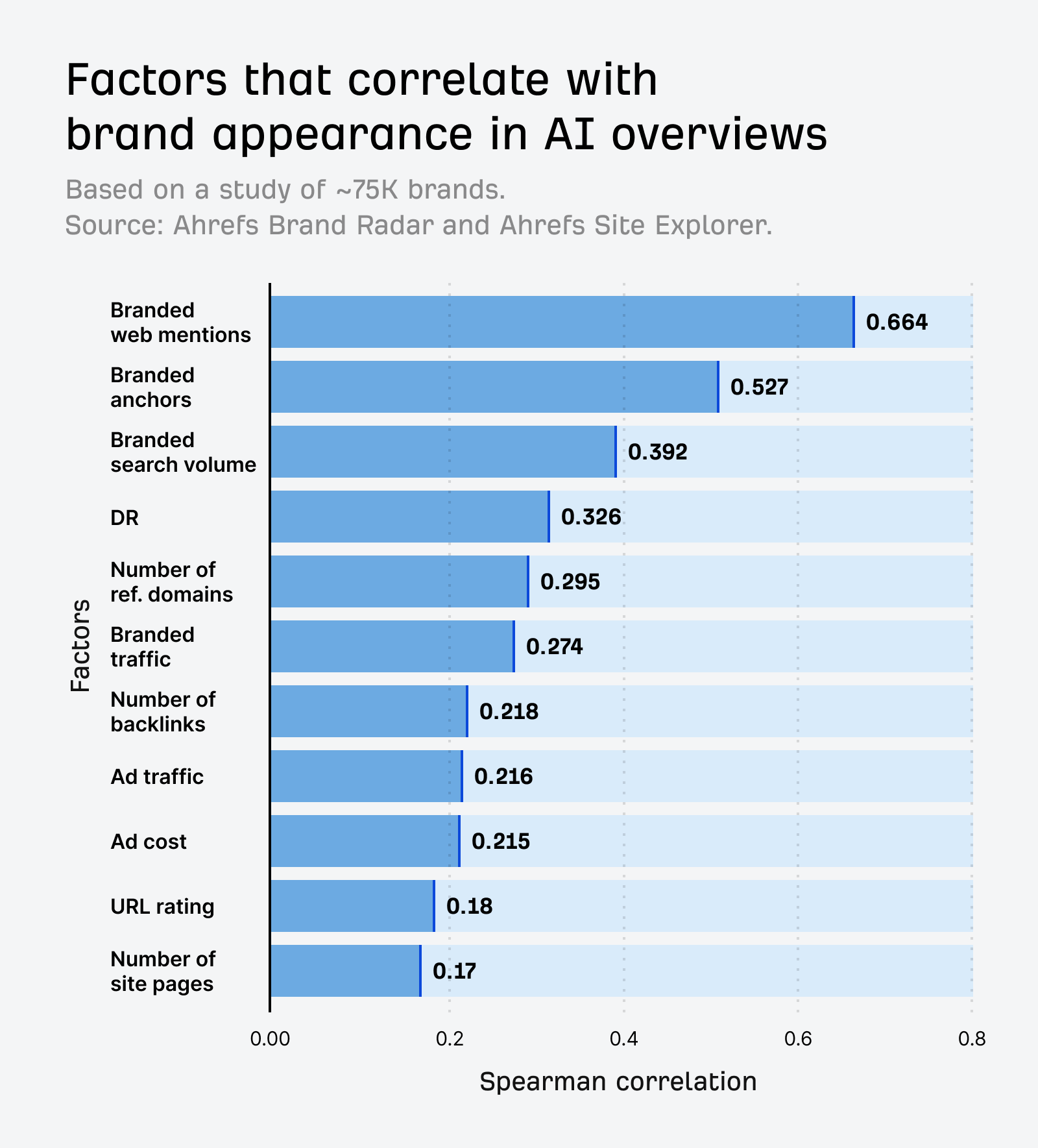
So, if people search for you, talk about you, and link to you by name, Google is more likely to feature your brand, even on unbranded queries.
That’s a big shift.
Google isn’t just rewarding good SEO anymore. It’s also rewarding good marketing and brand awareness.
Real-world example: What decent SEO + decent marketing looks like
Let’s look at this in action with a fairly unassuming local brand.
Proximity Plumbing is consistently a top-ranking business for plumbing keywords in their city. On paper, their SEO stats aren’t significantly better than those of competitors:
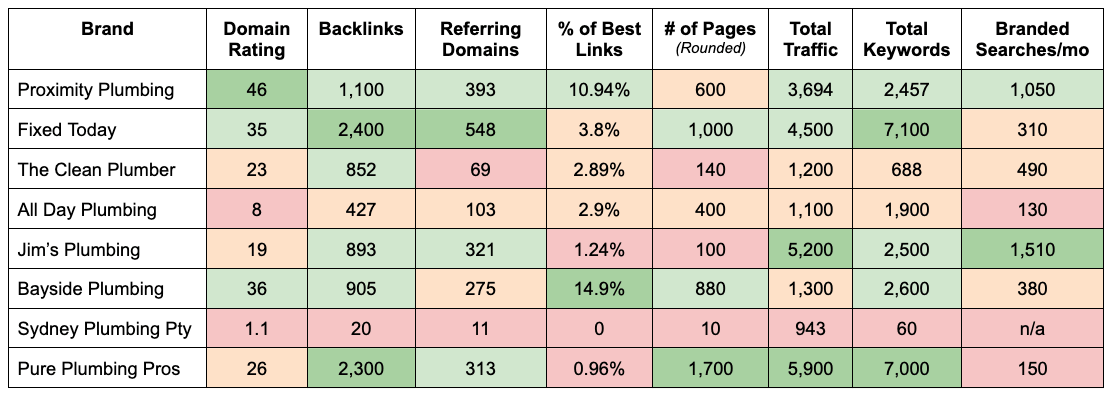
On average, they’re doing everything to a decent level, not the best, but decent.
It’s likely why they’re getting 31% traffic share for the most competitive keywords in their market:
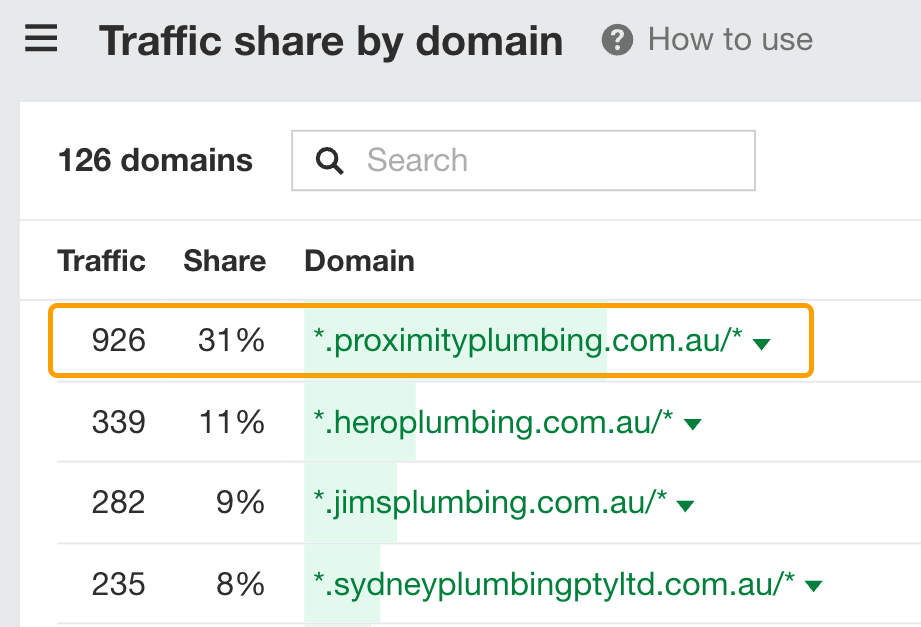
They’re leagues ahead of everyone else—even sites with thousands more pages of SEO content and links.
They’re doing decent marketing on top of their decent SEO, and it’s working.
For example, they get over 1,000 searches a month for their brand:

They have over 1,700 reviews with an average 4.9-star rating (talk about trust!) and they’ve uploaded 1,000+ real images and videos proving they’re a real business (talk about credibility!)
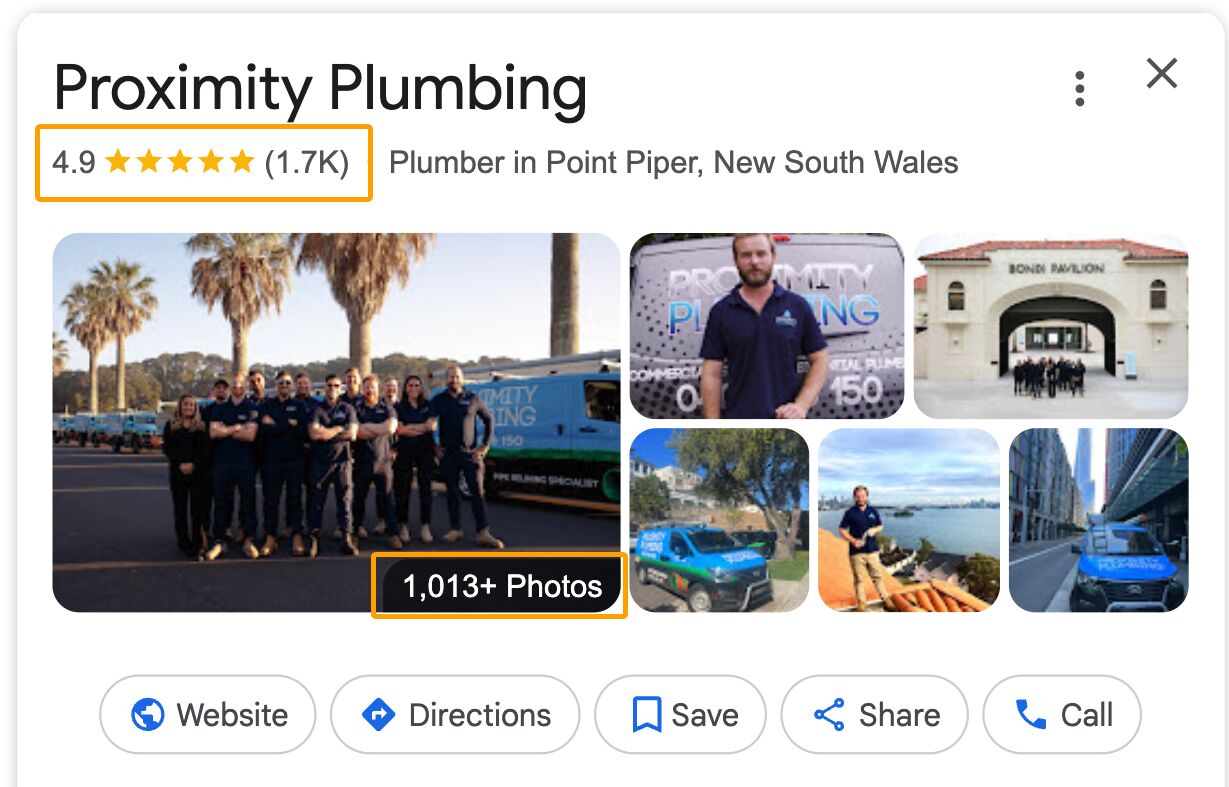
They also have over 7,000 followers on LinkedIn:

No other plumber I know uses LinkedIn.
Sure, Proximity Plumbing’s LinkedIn content isn’t top-tier, but they’ve shown up consistently and done the basics well for years.
And it adds up. Their brand comes across as the most credible, reliable, and trustworthy in their area.
This is where SEO teams need to evolve: into real marketers. Not just to rank #1, but to build brand equity that compounds over time.
Proximity Plumbing proves it: decent SEO plus decent marketing outperforms great SEO with lazy marketing.
So here’s how to level up.
The shift from cookie-cutter SEO to true marketing isn’t theoretical. It’s already happening.
Across industries, we’re seeing brands outrank competitors not because they’ve gamed the algorithm, but because they’ve integrated SEO into a more holistic marketing strategy by doing the following.
1. Deep audience research to guide strategy
SEO has long relied on proxy signals like keyword volume, search intent modifiers, and autocomplete suggestions to understand what people want. As user data, it’s still powerful because it’s unbiased.
Tools like Ahrefs’ Keywords Explorer show the exact phrases people search for and how often.

That kind of quantitative data makes search incredibly valuable, but modern marketing needs more. It also needs qualitative insight.
It’s about going from “What keyword should I rank for?” to “What problem is this person trying to solve, and how do they talk about it?”
That means merging the power of quantitative data from keyword tools with deeper audience insights to understand their motivations, language, and behavior.
You can achieve this by:
- Using SparkToro to find where your audience hangs out and who influences them
- Scanning Reddit, Quora, and YouTube comments to capture their exact language
- Interviewing users to uncover decision drivers, preferences, and emotional triggers
- Analyzing support tickets, chat logs, and sales calls to surface questions and objections
- Testing messaging with Wynter or UserTesting to see what actually resonates
When you understand your audience deeply, your content speaks their language, tackles real concerns, and delivers answers they didn’t even know they needed.
2. Intentional brand building
Most SEOs assume brand building just happens. Rank well, publish often, get a few mentions, and the brand will form on its own.
But that’s not how visibility works. It never has. Your brand must be built on purpose, not as a byproduct of your blog.
Google has been learning about your brand for years through signals like:
- Monthly branded search volume
- Site quality relative to others
- On-page content and what it says about you
- Structured data and its role in the knowledge graph
- Links, mentions, and citations from external sources
- Traffic sources and distribution that reflect real demand
No single metric captures all of this, but that hasn’t stopped Google (or LLMs) from forming opinions about brands and surfacing them in AI features.
The problem? They don’t always get it right.
Tools like Ahrefs’ Brand Radar let you search your brand and see how it’s summarized in AI Overviews:
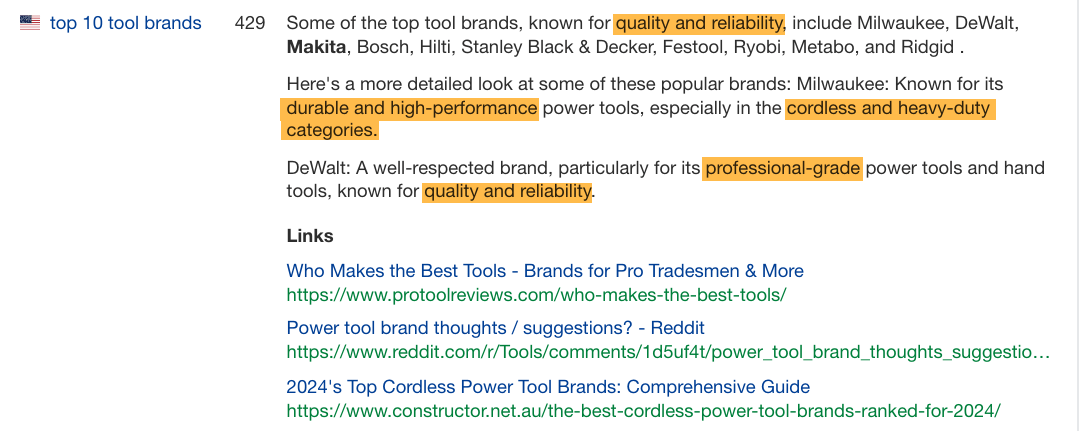
You can do the same for competitors to compare how each brand is framed and find which are more closely tied to your core product category or keyword.
It’s an evolving space. If you’re not actively shaping the narrative through positioning and distribution, Google and LLMs fill in the gaps with guesses, hallucinations, or silence.
This is what intentional brand building solves.
It’s not about logos or color palettes, but clearly articulating your expertise, values, and differentiation across every touchpoint.
That means:
- Clear, repeatable positioning that highlights what makes you different
- Messaging that stays consistent across your homepage, blog, thought leadership, ads, and SERPs
- Branded content formats (e.g., frameworks, themes, or signature styles)
- Showing up in relevant communities, conversations, and media
- Building a public presence (LinkedIn, YouTube, social) to earn familiarity
Today, being the best answer isn’t enough. You also need to be the most trusted name giving it.
3. Demand creation beyond search
One of my all-time favorite examples of good marketing is this:

It doesn’t seem like much — no title, cover, author, description or social proof. Just a 544-page hardcover, listed by Red Tower Books.
Uploaded to Amazon in October 2023, it hit #1 bestseller across all books in under 24 hours.
Read that again. #1 across all books on Amazon, overnight.
SEO alone can’t do this.
This is demand generation at its peak: people trusting you (and your brand) enough to pay upfront for something they know nothing about.
In this particular example, three key forces drove demand for this book:
- BookTok and romantasy groups sparked serious FOMO
- The publisher’s strong track record in the romantasy genre
- Their ability to fuel and amplify more FOMO with every new release
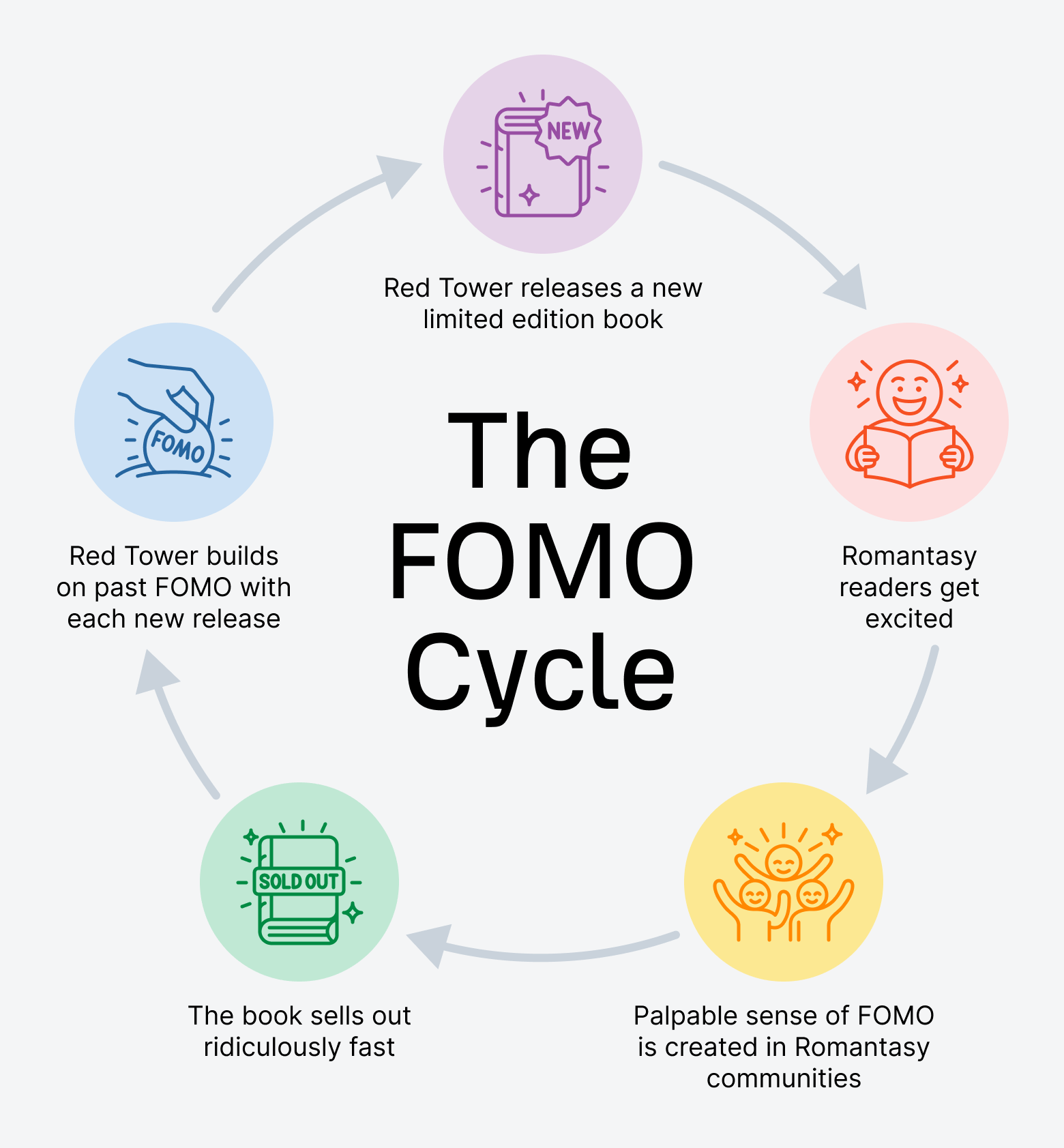
Red Tower may not have expected the untitled listing to go viral, but it did, thanks to the FOMO cycle they’ve been building with each previous release.
The reality is that SEO can’t create this kind of momentum. It’s built for capturing demand, not generating it.
- Demand generation creates desire where none existed.
- Demand capture channels existing desire to your product.
For example, while the untitled book was buzzing in forums and social media, people still turned to Google, searching for it in countless different ways:

Not to mention that each of these keywords spiked in October 2023 with over 20,000 total searches!
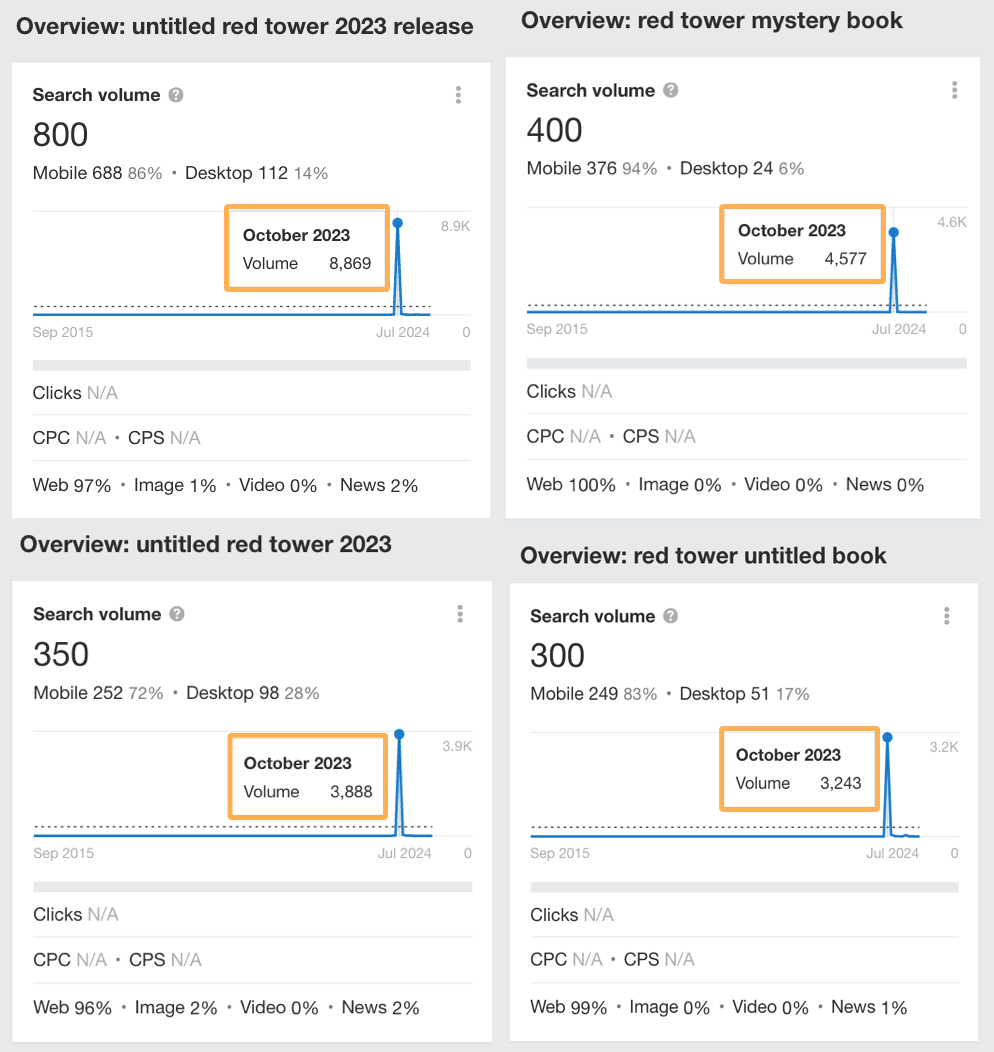
People can’t help but Google things, even when they know exactly where to buy. In this case, everyone knew the book was on Amazon, but search traffic surged anyway.
This behavior shows up across all audiences, B2B and B2C.
That’s why SEO needs to work with your other channels. No matter how demand is created, search remains a key way to capture it and turn it into sales.
4. Optimizing for “search everywhere” visibility (not just on Google)
Traditional SEO taught us to optimize for Google. But modern users don’t search in just one place.
They discover brands through Reddit, YouTube, TikTok, Quora, newsletters, podcasts, Slack groups and increasingly, LLMs.
Here’s what my own search journey looked like when I was buying a laser cutter:

That’s just one search journey.
The most forward-thinking SEOs are shifting from search engine optimization to search experience optimization. The goal: optimize not just for rankings, but for the entire journey people take when searching for what you offer (both on and off your site).
It’s about earning trust and visibility everywhere your audience is looking. To do that, SEOs need two often-overlooked marketing skills: distribution and promotion.
- Distribution gets your content in front of more people through a mix of owned, earned, and paid channels.
- Promotion is the act of persuading through the messaging and tactics that attract and hold attention.
These aren’t extras. They’re core marketing functions and SEOs need to build these skills fast to stay competitive.
At Ahrefs, we bake both into every strategy we publish using our B.R.E.W. framework:
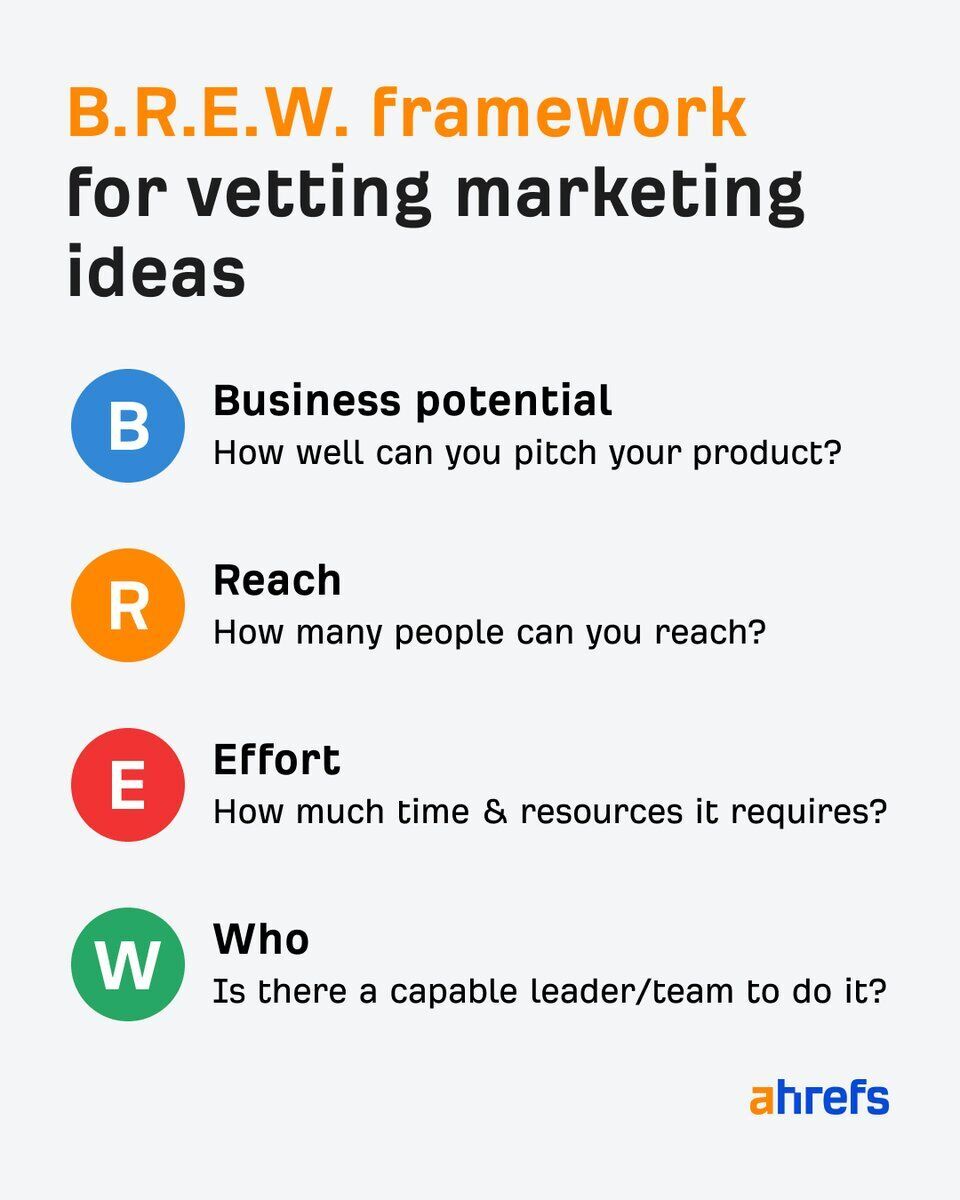
When pitching ideas, we always ask: how will this be distributed beyond SEO? If it can’t gain traction through search, email, social, or paid, we don’t do it.
Even great content doesn’t spread itself. To borrow a classic thought experiment: if you publish content and no one sees it, is it really marketing?
SEOs of the future will be judged not by what they publish, but by its reach.
You can track which channels are actually driving traffic with Ahrefs Web Analytics, a privacy-first tool that shows your performance across all discovery platforms, not just Google.
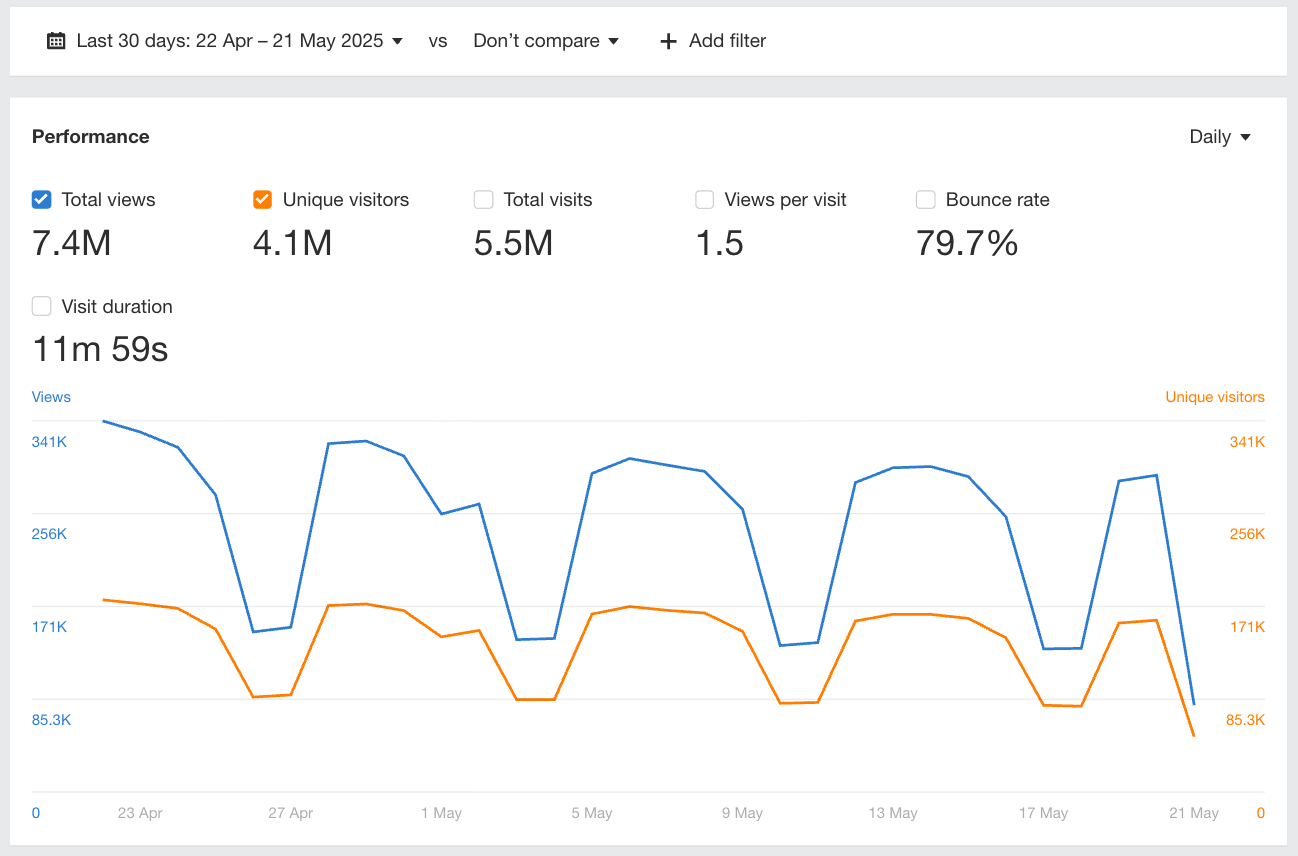
You can also see which traffic sources send the most visitors:
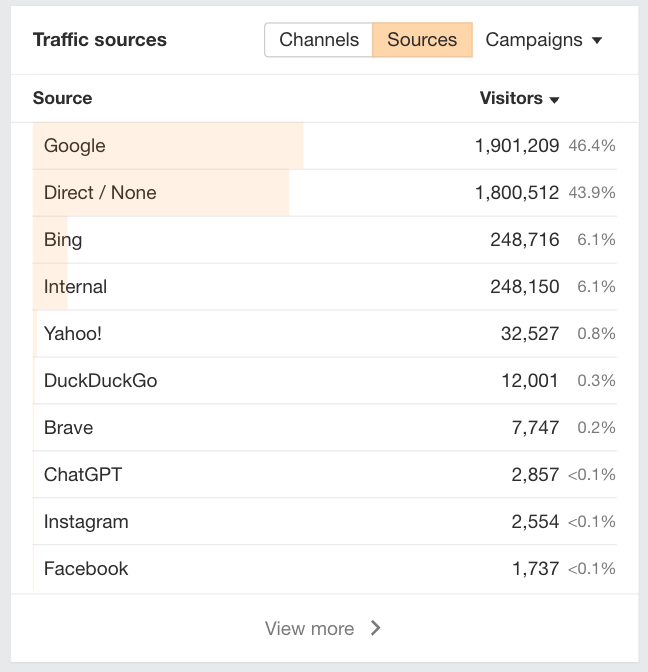
And what pages get seen the most:
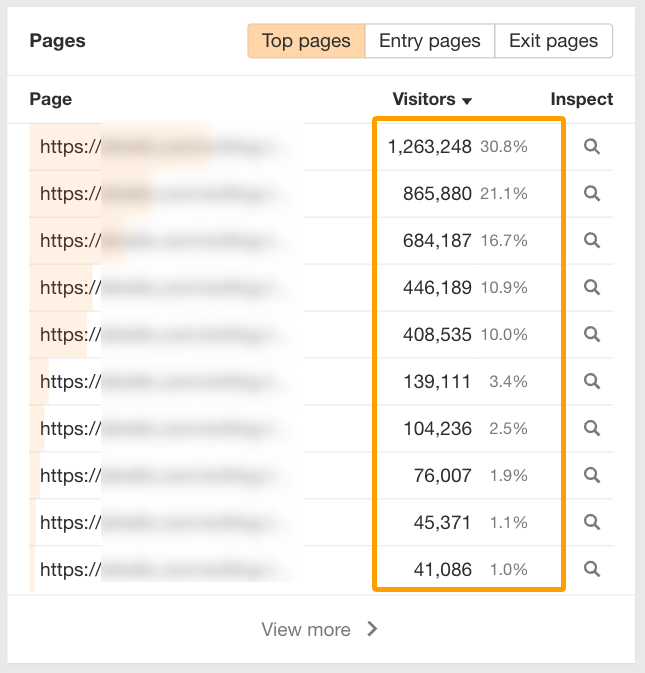
5. Creating a moat of unforgettable content
Let’s be real: none of this matters if your content is forgettable.
In a sea of AI-written and lookalike posts, content that only informs or briefly entertains is a commodity. It has to move people to stand out and leave a mark.
Google’s latest content guidelines specifically mention non-commodity content as a path forward for publishers:

Other marketers have long understood this. While they mastered storytelling and emotional impact, SEOs were busy debating ranking tactics for content that only sometimes delivered value.
To create content that truly resonates, you need to:
- Trigger “aha” moments by solving real problems people didn’t know they had
- Share lived experience or hard-earned insights, not generic tips
- Engage curiosity and stimulate the reader’s mind to form new neural pathways
- Echo your audience’s internal dialogue to create a feeling of being understood
- Be courageously authentic and vulnerable, and help others do the same
- Offer perspective shifts that reframe and expand the reader’s worldview
- Add a spark of joy, wit, or levity to cut through the daily mundane
For example, let’s look at this post, LLMs Don’t Reward Originality, They Flatten It. This piece was not designed to rank in search engines, as evidenced by Google Search Console.
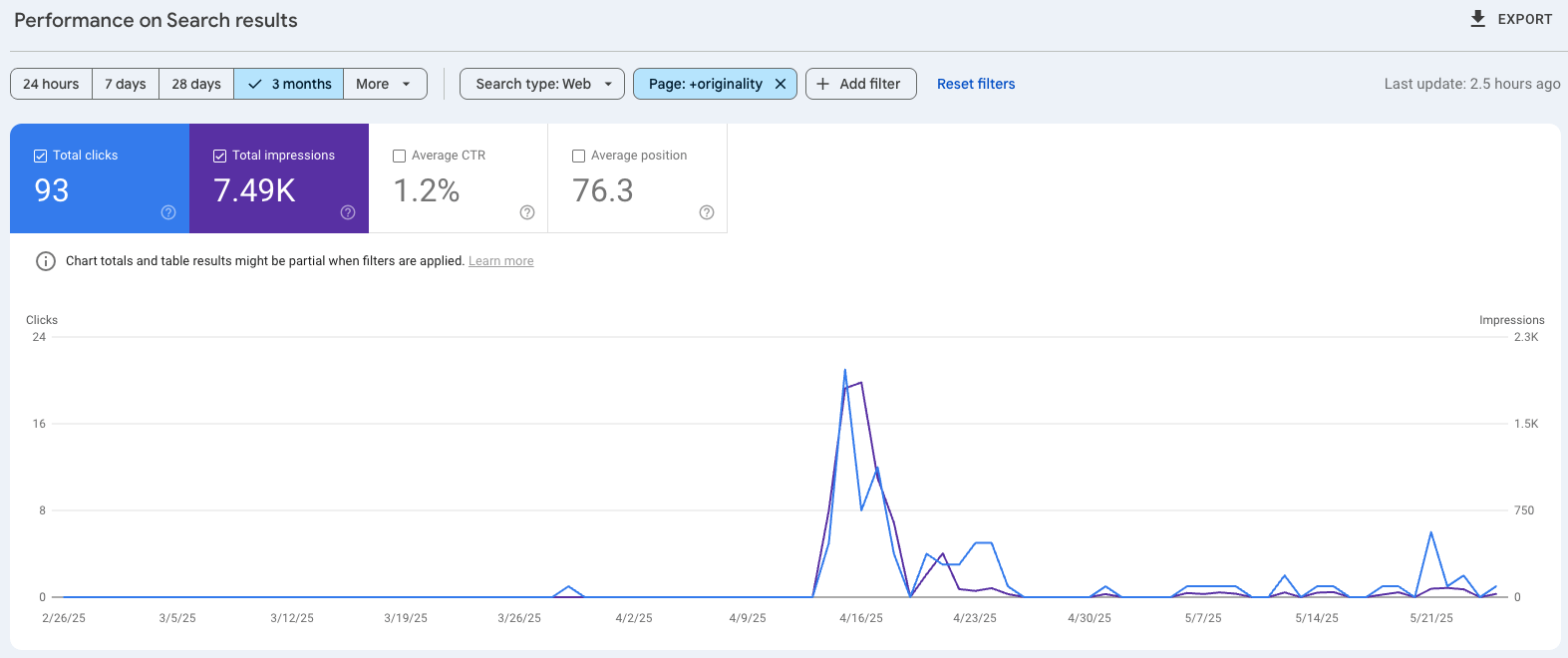
Yet, it’s been getting traffic every day since it launched, with ~4,000 total views and an average duration of over 17 minutes:
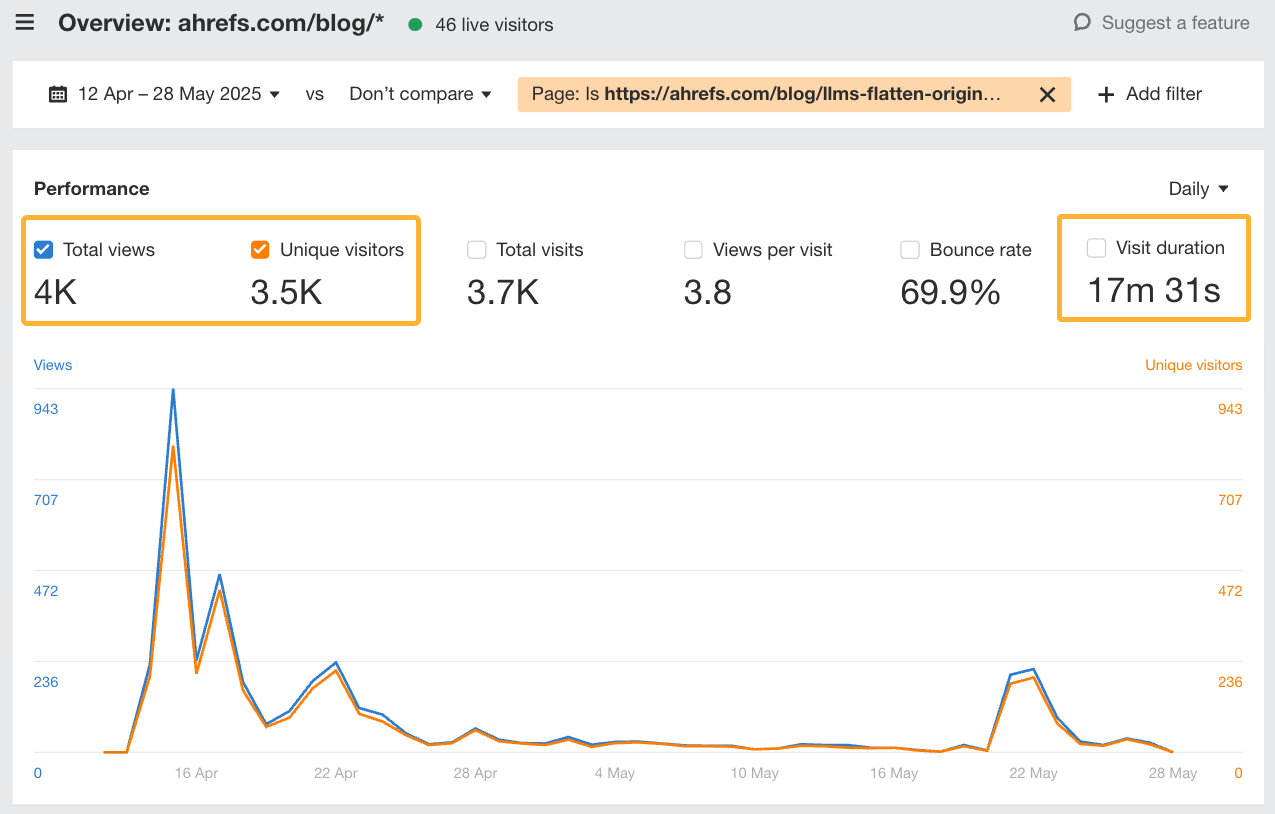
We reached this visibility by first sharing the post on LinkedIn. The post only got ~7,490 impressions through SEO, but check out its reach on LinkedIn:
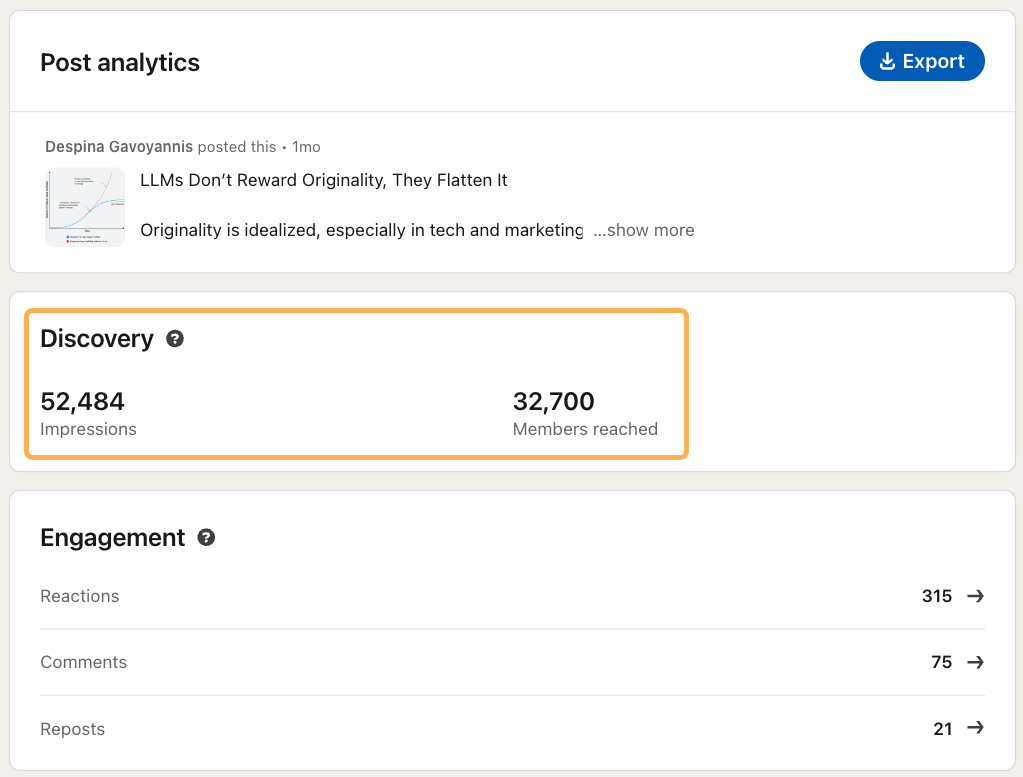
And that’s just my post on LinkedIn.
While the team at Ahrefs helped amplify the post, we also noticed it reaching CEOs, founders, and CMOs who made their own posts with different takes to share with their communities. For instance, here’s Matthew Tharp’s share:

Beyond social shares, the rest of the traffic comes from direct visits, email newsletters, news articles, and sites that syndicate Ahrefs’ content.
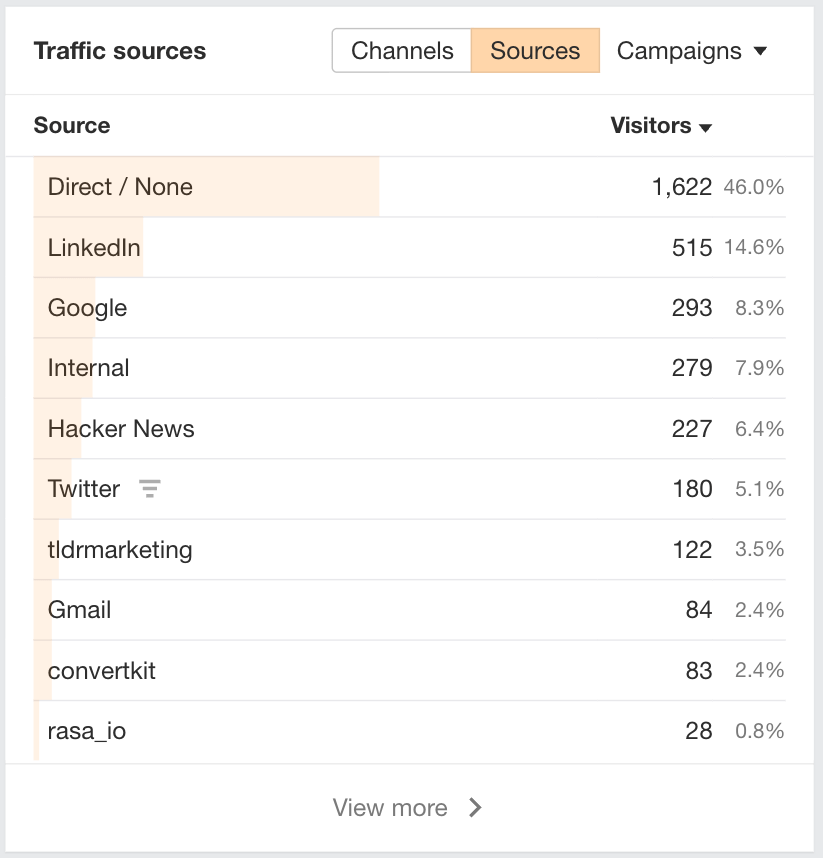
The post resonated in a way that content written for SEO often does not (or cannot). A month later, people are still sharing it!
This is likely because it articulated an instinct that many people had but didn’t know how to express, which means they’re not able to search for it when they don’t yet have the language for it.


It also encouraged curiosity and invited people to consider a new perspective:



This is the impact that the content we publish now and in the future needs to make on your audience. It’s what non-commoditized content looks like in action.
Building a moat of content that makes this kind of impact is not something you can outsource to AI. It takes some elbow grease and grunt work, but is well worth the effort.
Now, all of this is not to say that you shouldn’t also optimize your content for SEO. Keep doing that as a baseline so it can appear in search.
It’s more about elevating your content goals. Instead of aiming to be summarized by AI, it’s about making a meaningful impact with humans.
This is how you win attention, no matter where people search.
Final thoughts
If you’re still clinging to the idea that traditional SEO can help you get more traffic, answer this honestly: If AI-powered search engines sent no traffic to any publishers, would your brand still have a leg to stand on?
Would you still have an audience?
The SEOs who thrive from here on out will be the ones who treat visibility as the byproduct of great marketing, not the other way around. That means building trust, showing up everywhere your audience searches, and creating content that actually matters.
Good SEO plus lazy marketing won’t cut it anymore. It’s time to level up.



